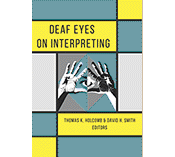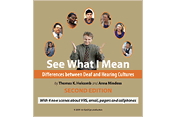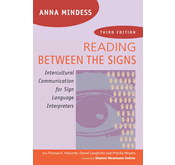
This is the twentieth weekly installment featuring highlights from the 20 chapters in the new book, Deaf Eyes on Interpreting, edited by Thomas K. Holcomb and David H. Smith, which was released in June by Gallaudet University Press.
Making connections is a critical aspect of Deaf culture. In this chapter, Naomi Sheneman states that if interpreters do not incorporate certain cultural conventions, like introducing themselves in a culturally appropriate manner before beginning their interpreting work, they send a message that they do not understand or respect Deaf culture. Consequently, Deaf people may have trouble trusting them. What is necessary is to specify their first name, last name, and the name of the agency that sent them. This is to make it easy for Deaf consumers to provide feedback.
Ignoring this custom perpetuates the conduit model and promotes a growing disconnect between the Deaf and interpreting communities. If interpreters cannot begin by introducing themselves properly, Deaf people would worry whether they are capable of facilitating cross-cultural communication. Sheneman calls on interpreter educators to educate future interpreters on ways to build a stronger connection with the Deaf community, including making culturally appropriate introductions.
 edited by Thomas K. Holcomb and David H. Smith, which is scheduled to be released in June by Gallaudet University Press. This chapter, entitled Accountability and Transparency: The Missing Link in Ensuring Quality in Interpreting, has three co-authors: Chad Taylor, Ryan Shephard, and Justin “Bucky” Buckhold.
edited by Thomas K. Holcomb and David H. Smith, which is scheduled to be released in June by Gallaudet University Press. This chapter, entitled Accountability and Transparency: The Missing Link in Ensuring Quality in Interpreting, has three co-authors: Chad Taylor, Ryan Shephard, and Justin “Bucky” Buckhold.






